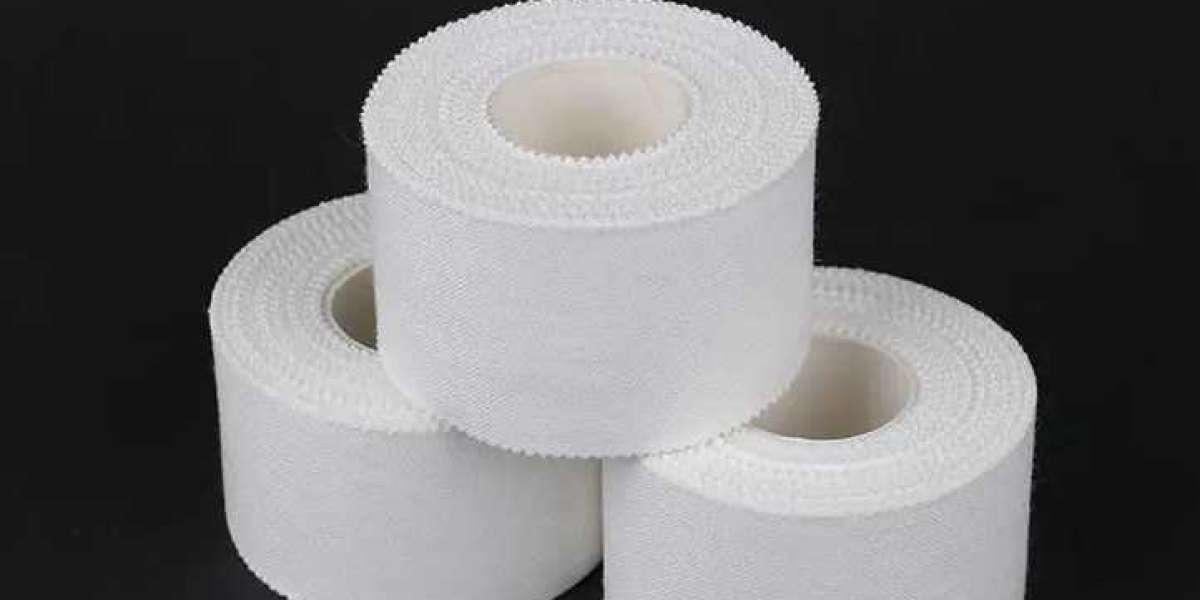In the competitive world of sports, every advantage counts, and athletes are constantly seeking ways to improve their performance. One such method that has gained popularity in recent years is the use of sports therapy tape. This specialized tape, designed to provide support and stability to muscles and joints, has been touted as a game-changer in the athletic community. But what exactly is the impact of sports therapy tape on enhancing athletic performance, and how does it work?
Sports therapy tape, also known as kinesiology tape, is a type of elastic therapeutic tape that is applied to the skin to provide support and relief from various musculoskeletal conditions. It is made from a cotton material that is coated with a water-resistant, acrylic adhesive. The tape is designed to mimic the elasticity of human skin, allowing for a full range of motion while still providing support. This unique property sets it apart from traditional athletic tapes, which are often rigid and can limit movement.
The use of sports therapy tape has been linked to several benefits that can contribute to improved athletic performance. One of the primary ways it aids athletes is by reducing muscle fatigue. By providing support to the muscles, the tape can help to distribute the workload more evenly, reducing the strain on individual muscle groups. This can lead to less muscle fatigue and potentially improved endurance during physical activities.
Another significant impact of sports therapy tape on athletic performance is its ability to enhance proprioception. Proprioception is the body's awareness of its position in space and its ability to control movement. The tape's application can stimulate the skin and underlying mechanoreceptors, which can improve the athlete's awareness of their body position and movement. This heightened sense of proprioception can lead to better balance, coordination, and overall control during athletic activities.
Sports therapy tape is also believed to have a positive effect on lymphatic drainage and blood circulation. By lifting the skin, the tape can create a small space that facilitates the flow of lymphatic fluid and blood, reducing inflammation and speeding up the healing process. This can be particularly beneficial for athletes who are recovering from injuries or experiencing delayed onset muscle soreness (DOMS) after intense workouts.
Moreover, the tape can be used to provide support to specific muscles or joints that are prone to injury or strain. For example, runners might use sports therapy tape on their calves or shins to prevent shin splints, while tennis players might apply it to their wrists to reduce the risk of wrist injuries. This targeted support can help to prevent injuries and allow athletes to perform at their best without fear of injury.
However, it is important to note that the effectiveness of sports therapy tape can vary from person to person. Some athletes may find it incredibly beneficial, while others may not notice any significant difference in their performance. Factors such as the individual's physical condition, the specific sport, and the technique used to apply the tape can all influence its effectiveness.
In conclusion, sports therapy tape has the potential to significantly impact athletic performance by reducing muscle fatigue, enhancing proprioception, improving lymphatic drainage and blood circulation, and providing targeted support to prevent injuries. While it may not be a magic solution for every athlete, it is a tool that, when used correctly, can contribute to improved performance and recovery. As with any training aid, athletes need to work with professionals, such as sports therapists or trainers, to ensure the tape is applied correctly and effectively to maximize its benefits.








